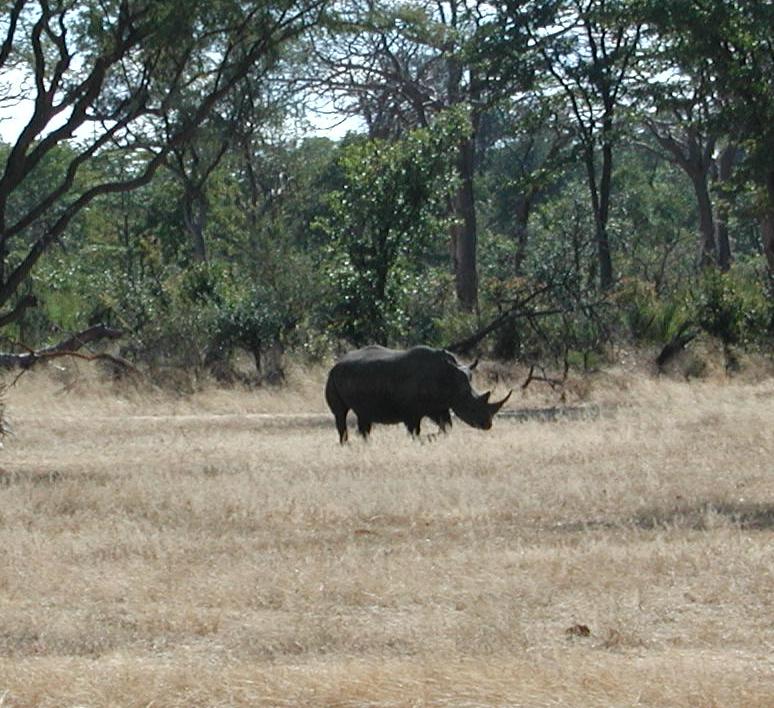Zambia

 Back to Images of Africa
Smaller image
Back to Images of Africa
Smaller image

The main reason for visiting the reserve on the Zambezi is an
opportunity to spot a White Rhinoceros (Ceratotherium
simum), which has been re-introduced into the area from
South Africa. "But it's black, not white!", you
immediately exclaim. "White" is, in fact, a misleading
anglicisation of the Afrikaans wijde, meaning "wide",
referring to the shape of its upper lip, which is adapted for
grazing. The more common Black Rhinoceros (Diceros
bicornis), which principally browses on leaves and twigs,
has a pointed prehensile upper lip. The white rhinoceros is
second only to the elephant as the largest land mammal, with
large bulls weighing in excess of 2500 kg. Despite their mass,
white rhinoceros are quite agile, able to run as quickly as 40
km/hour. Fortunately, they are not as aggressive as the black
rhinoceros, and are more prone to run away from a provocation
than charge.
by John Walker
July, 2001
This document is in the public domain.




